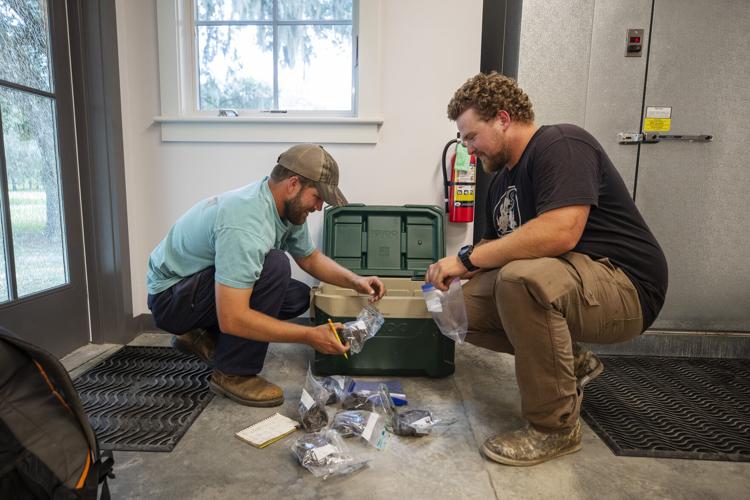YEMASSEE — The Nemours Wildlife Foundation opened a new $2 million laboratory in October that will provide 3,200 square feet of research space within the ACE basin for students across the Southeast.
The completion of the new Ernie P. Wiggers laboratory was celebrated in late October along with the foundation’s 25th anniversary at Nemours Plantation in Yemassee. The new lab is named after the organization’s longtime president and CEO.
Wiggers said students from across the country use the facilities at Nemours Plantation to put into practice what they have learned in their campus classrooms. The foundation is known for providing students with field experience to supplement their academics.
And since its start, more than 30 graduate and postgraduate students from nine institutions have studied at Nemours. Now, at the new facility, those who are conducting wildlife research will be able to use laboratory freezers and hoods, areas to prepare and store samples, equipment including microscopes and dedicated office space, among other features.

The Nemours Wildlife Foundation laboratory is pictured Oct. 22, 2021, in Yemassee. Lauren Petracca/Staff
The type of student work already completed at the new Nemours lab spans a variety of topics. Recently, Stephen Clements, a doctoral student from Mississippi State University, collected mud samples from the Lowcountry that will be used to determine food abundance for wintering waterfowl.
“So they’ll collect those (samples), and then they’re going to have to have a place to come back, spread all that out and sort through it,” Wiggers said.
And that’s where the new lab comes in. In addition to providing a space for Clements to do this work, Nemours gave him the resources to be able to create special tools to collect the needed samples.
He and a colleague designed and built devices while at the lab to easily cut and dig samples from the ground so that each one is uniform in size and shape.
Graduate-level researchers from other Southeastern schools, including Clemson and Coastal Carolina universities, have taken advantage of the Nemours facilities, too. The foundation has also funded internships for 70 undergraduate students.

The inside of the Nemours Wildlife Foundation laboratory on Oct. 22, 2021, in Yemassee. Lauren Petracca/Staff
Heather Venter was the foundation's first intern. She now works as a conservation land manager in northeast Florida where she manages more than 42,000 acres of public land.
"My time at Nemours not only taught me how to be a better biologist, but it gave me the foundation to be successful working in the field," Venter said.
Venter credits Nemours as being the first place she learned how to plan and participate in prescribed burns, which she is now responsible for in her professional role.
Experiences like the ones had by Clements and Venter would not have been possible if it weren't for the vision of Eugene DuPont III. He was the man behind the idea for the Nemours Wildlife Foundation, headquartered on 10,000 acres of rice fields and upland forests along the Combahee River in Beaufort County.
Mike McShane, chairman of the foundation, said DuPont created Nemours out of a love for the area.
He said that same passion directs the foundation’s work 25 years later.
“Thanks to gifts from many supporters, we have the confidence to invest in an on-site facility to support the expansive wildlife research that takes place in the field,” McShane said in a news release. “More importantly, we’re better positioned to grow the next generation of land managers.”
Students or donors who would like to learn more about the Nemours Wildlife Foundation can go to nemourswildlifefoundation.org.















